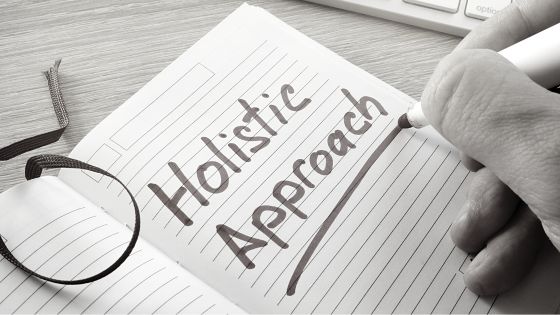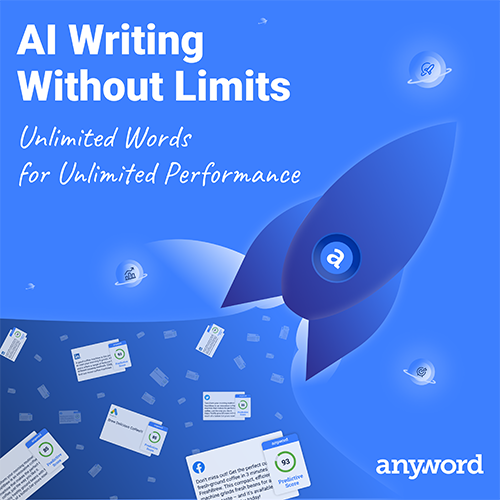We talk about holistic marketing a lot because it is the foundation of Dandelion Branding. Our approach to marketing for any business is holistic because by looking at your digital presence as the single entity it is, we can use digital marketing tools to accurately share a company’s values while we’re growing their loyal fan base. (Because you can make money and make a difference.)

We usually hear that as a business, you ‘need’ social media, that you ‘should probably’ write blog posts, and that email marketing is a ‘nice to have’. This thinking takes every marketing platform or campaign as a separate goal rather than part of the whole package.
We don’t operate that way.
We know through experience and data analysis that the best, most efficient way to grow organic traffic and hit sales targets is through building and executing holistic marketing strategies. In this article, I’m going to talk about the pieces that make the whole picture.
What is a Holistic Marketing?
In holistic marketing, the view is simple: the brand’s whole is greater than the sum of its parts.
When we build holistic marketing strategies, we take a brand’s whole digital presence into consideration. Not just their individual campaigns, platforms, or content calendars.
A holistic marketing approach creates consistency throughout the brand’s digital presence by creating standalone pieces that fit within a very clear and consistent pattern of communication. Holistic marketing works best when a brand is focused on content marketing because it allows you to broaden your web of influence over time with topics and connections that are interesting to specific audiences.
The Parts of a Holistic Marketing Strategy
It’s easy for me to say, “your brand is greater than the sum of its parts” because it’s true. I also know that you’re here to get to know a little bit more about the parts that make up the whole. Here are the parts we think about when we create our strategies. Note that this isn’t in any particular order. Every brand has a different optimal holistic strategy, but these are the pieces that fit in to the holistic marketing strategies we create.
1 – Knowing the Audience and the Specific Goals
I’m always going to start here because understanding the goal is vital to taking any step on the holistic marketing journey.
Because we’re dedicated to sustainability, and that includes embedding efficiency into our processes, we don’t create aimless campaigns for no one. We always know who we are talking to and what action we want them to take.
2 – Search Engine Optimized Pages & Content
This serves a very basic need: get traffic to the website.
For holistic content marketing to work, a brand needs relevant, valuable information on their website. It has to speak to the intended audience, offer value and/or a call to action that brings people deeper into the brand.
Well written pages and articles can be linked to from emails, texts, and social media posts, plus taking the time for SEO can help you get found organically. It doesn’t do anyone a lick of good to just put content online and not do the due diligence to share it. Content allows a brand to broaden their audiences, get traffic, and gain loyal fans.
3 – Social Media Plays a Big Role in Holistic Marketing
We use social media for what it is: a tool that helps businesses get found and gain trust.
Our data shows that regularly posting is important, even for B2Bs, because it shows potential customers that you’re an active company. Plus you might be surprised to learn that 71% of people (and growing) use social media as part of their purchasing decision – even if they aren’t a follower!
Note: more isn’t always better. Our focus is, and always has been, on quality over quantity. For most businesses, especially sustainable companies, social media isn’t a main sales driver. But it does bring in fresh eyes and offer a great set of data for us to understand what matters in business.
4 – Retention. Retention. Retention.
Every piece of a holistic strategy is important, but retention miiiight be the most important. This is because sustainability-focused audiences don’t make impulse purchases. They buy from businesses they trust. Building in a retention strategy that allows you to catch an audience member alone, grab their attention, and offer them value is the best way to stay top of mind for when they are ready to make a purchase.
For most of our clients, this looks like building a robust email marketing plan (but there are other ways too like Whatsapp groups, Facebook messenger, or SMS).
A great retention strategy is worth investing in because you will find that this is your largest sales driver – often for both new customers and returning customers.
5 – A Dedicated SEO Plan
Holistic marketing strategy is not complete without organic traffic and a dedicated SEO plan.
At the start, this means making structural updates to SEO to make your website more google-friendly and bring in quality traffic (again, quality over quantity). When we have a SEO content flow (#2) and a great on-site structure, we start focusing on things like capitalizing on competitor keywords and building backlinks for our clients.
6 – Website User Experience Optimization
Up until now, most of what we talk about with marketing is bringing people into the website and communicating with them accurately. But traffic is only half the battle.
Do you know what happens when people find a website unwieldy, slow, or inconsistent? They leave. And they often don’t come back.
More than anything else, the experience on a website influences whether a person makes the choice to make a purchase or get involved with your retention strategy. Our focus on optimizing our clients’ websites for consistency and fantastic experience sets us apart from typical marketing agencies. And in our ongoing client relationships consistent optimizations make the difference between sales growth and stagnation.
7 – Internal Process Reviews
Holistic means WHOLE! Having inefficient internal processes will slow you down and lower content quality and consistency.
We do a lot to make sure that the process of getting website updated and content posts is as easy and efficient as possible for our clients because nothing is more frustrating than a bottleneck in traffic and sales. In some ways, streamlining internal processes is the most important thing a brand can do. We find that it doesn’t just help with marketing, it helps with customer and staff relationships and it takes the pressure off of busy CEOs that are constantly putting out fires.
The Role of Data Analysis in Holistic Marketing
In an established company, data tells you everything you need to know. It’s a special piece of the holistic puzzle because data is what turns your conceptual holistic marketing strategy into a working sustainable content marketing cycle. I elected to pull it out of the list because when we build a holistic strategy, we use data differently than when we are operating the content marketing cycle.
When it’s possible, we look at past data to get a sense of the current customer base and to get a sense of how mature an audience is. Sometimes we can jump straight into a robust daily social media calendar coupled with weekly blogs and emails. Other times we need to ramp up to the target slowly. Still other times we need to back way down on some pieces of the larger holistic marketing strategy while we optimize other pieces for consistency.




















